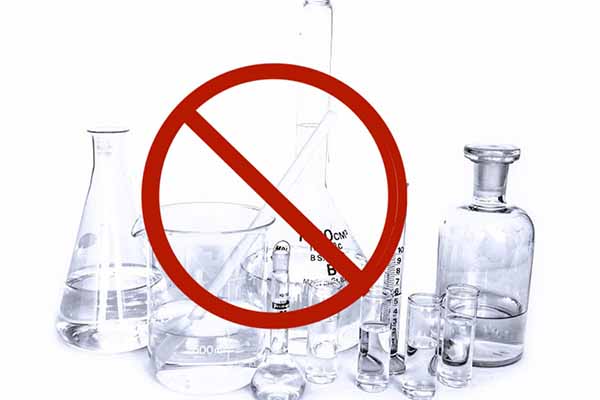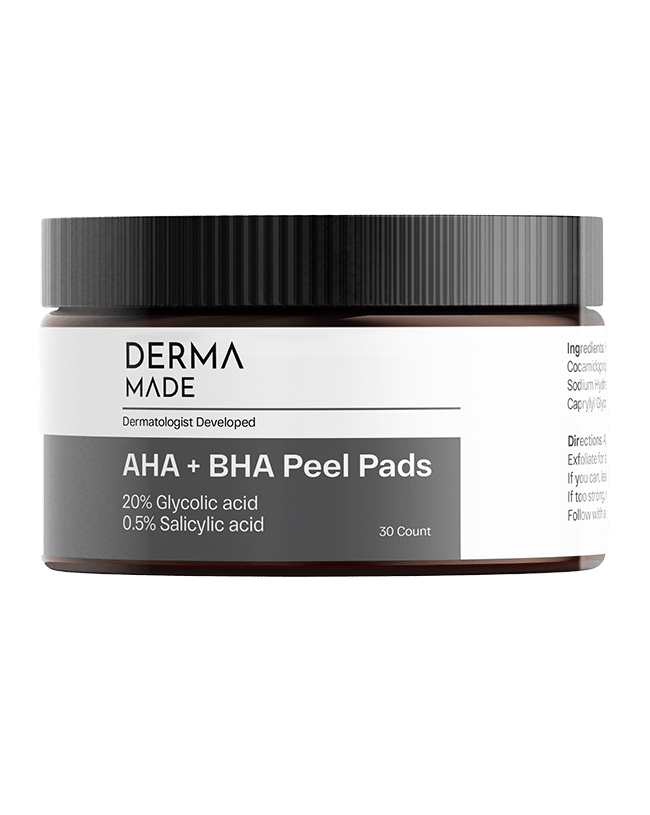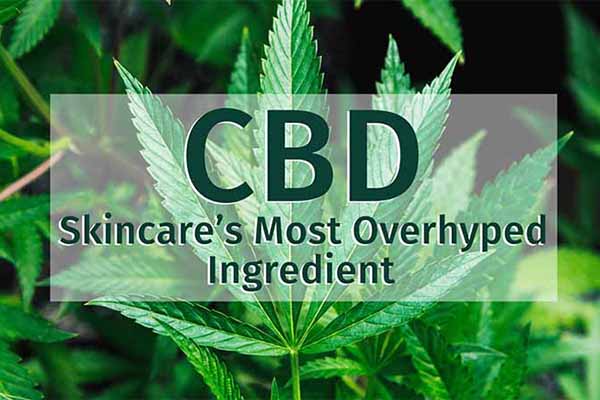70,000 new chemicals have been introduced to our environment since the 1950s. Only 5% have been tested for long-term impact. And many skincare products are overflowing with long lists of ingredients. Here’s 5 ingredients in skincare to avoid.
First, How Ingredient Regulation Works
Most skincare ingredients are or aren’t regulated by the U.S. Food and Drug Administration.
The U.S. FDA, doesn’t regulate cosmetics the way it regulates food and drugs. Food and drugs have to be rigorously tested before they end up on the market. Cosmetic ingredients don’t require pre-market approval and no pre-market clearance of safety or efficacy is required as well. Adverse reactions don’t have to be reported. And the FDA’s authority over cosmetics is post-market only (i.e., if something really bad happens the FDA intervenes).
In fact, there is an organization called the Cosmetic Ingredient Review that is the skincare and cosmetic industry’s safety and review board. They ensure all ingredients in your makeup and skincare have been given the OK. They use a process of unbiased assessment, in an expert manner. The CIR and FDA work together to keep cosmetic products and the ingredients used in them safe. Safe, but unregulated. So the importance of knowing what ingredients in skincare to avoid is real. And which ingredients in skincare to avoid isn’t as simple as natural vs. chemical either.
“Chemical” Isn’t Necessarily Bad
Oftentimes, in cosmetic and skincare products there is an idea that chemical or lab designed ingredients are inherently bad. But that’s not necessarily the case. From carrots to cars the world we live in is made up of chemicals. Even carrots have an ingredient list including, 85% water, 10% carbohydrates, which break down into the molecules of carbon, oxygen, and hydrogen.
Chemicals created in a lab can be called natural too, as they are made of elements that naturally occur on Earth. Bio-technology now drives cosmetic ingredient innovation. These new products often carry more benefits to the skin and less harm to the person and the environment.
Lab Created Ingredients To Look For
Squalane
Squalane is an ingredient now popular in moisturizers or by itself, in a serum or oil form. Previously, squalane could only be harvested from shark livers. Not good for the environment or the shark, and definitely not cruelty-free. But thanks to the innovation of biotechnology a plant derived version of squalane was developed and is now mass produced.
Peptides
Peptides are found in every tissue and cell in the human body. When used in skincare, they influence and increase the production of collagen fibers as well as other skin functions that determine how it looks. Collagen makes up the support structure of our skin. It’s the stuff that makes skin bouncy and full. Peptides, then, directly enhance the youthful appearance of skin.
Hyaluronic Acid
Hyaluronic acid occurs naturally in the body, too. It’s responsible for healthy joints and skin. Hyaluronic acid can be taken as a supplement, but when used directly on the skin you get the maximum benefits of its moisturizing properties. Hyaluronic acid serum draws moisture to the skin, increasing the amount of moisture, which helps skin look plumper and fuller.
“Natural” Isn’t Necessarily Good
The word “natural’ has no regulations attached to it, and it has no direct bearing on quality or safety in skincare. American’s are under the impression that the word ‘natural’ is synonymous with safe. But nothing could be further from the truth. There are many natural compounds that are harmful and even dangerous. Poison Ivy is 100% natural and organic!
In fact there’s a long list of natural compounds from foods to flowers that are poisonous including some wild mushrooms, rhubarb leaves, and even the beautiful flowering plant wolfsbane, which was used to make poisonous bullets during World War II.
Whether a product is natural or chemical is less of an issue as how effective a compound or ingredient is in skincare. Here is the list of what to avoid in your skincare products.
Ingredients in Skincare to Avoid
Formaldehyde
- Formaldehyde’s natural form is a colorless gas. It’s a naturally occurring highly toxic systemic poison that is easily absorbed by the lungs, but lesser through the skin. It is a known eye, skin, and respiratory tract irritant.
- Formaldehyde, and chemicals that release formaldehyde (formalin and methylene glycol) over a certain period of time, are present in cosmetics, lotions, shampoos, shower gels, nail polishes, and hair straightening products.
- Formaldehyde also goes by the names formalin and methylene glycol.
- Concerns form over repeated exposure to formaldehyde leading to cancer. It also causes asthma and contact dermatitis, as well as allergic reactions.
Hydroquinone
- Hydroquinone is a skin bleaching product used to lighten areas of hyperpigmentation or dark patches.
- It works by reducing the number of melanocytes present in the skin. Melanocytes produce your skin’s tone.
- There are no conclusive studies showing hydroquinone as harmful. But in 2006 the FDA proposed a ban on the use of hydroquinone in cosmetic because, “studies in rodents show ‘some evidence’ that hydroquinone may act as a carcinogen”
- Side effects include redness, dryness, and in some cases a rare condition called ochronosis. Ochronosis occurs from long term use, resulting in blueish-black papules on the skin.
- Safe alternatives for skin lightening include vitamin C, retinoids, and regular exfoliating with acids. Acids are one of the best options for skin brightening. To find out more about safe alternatives to lighten uneven skin tone read this article.
Phthalates
- Phthalates are a group of chemical compounds used in everything from toys to vinyl flooring, detergent, food packaging, pharmaceuticals, after-shave, soaps, fragrance, and lotions.
- They are primarily used as a plasticizer. Two examples in cosmetics are in nail polish to keep it from cracking, and in hair spray, allowing for the spray to form a flexible film.
- A common phthalate is diethyl phthalate (DEP), used to dissolve and fix fragrance.
- Phthalates are known as hormone disruptors, meaning they disrupt hormones that work with estrogen, like testosterone.
- Learn more. Here’s a list of products surveyed in 2010 for phthalates.
Fragrance
- Companies don’t have to divulge what ingredients are in their fragrance products.
- According to the FDA, “Under U.S. regulations, fragrance and flavor ingredients can be listed simply as ‘Fragrance’ or ‘Flavor.’”
- Fragrance is used in 50% of beauty products.
- It irritates skin, is highly allergenic, has toxic hormonal effects, and possibly causes cancer.
- One study found that, “About 2500 different fragrance ingredients are currently used in the composition of perfumes…”
Talc
- Talc is a natural occurring mineral composed of magnesium, hydrogen, oxygen, and silicon.
- Used in everything from rice to chewing gum, and in cosmetics to absorb moisture, prevent caking, and improve the feel of a product.
- The trouble is it’s link to asbestos. Asbestos in another naturally occurring silicate mineral. The two are found in close proximity within the earth. Concerns arise that talc can be contaminated with asbestos, and asbestos causes cancer.
- March 2020. The FDA released a new brief regarding talc’s safety in cosmetics. Stating in part, “There is general agreement among U.S. federal agencies and the World Health Organization that there is no known safe level of asbestos exposure.” The risk is in asbestos contaminated talc products. A 2018 study found high levels of asbestos in three types of makeup at Claire’s. See the FDA list of cosmetic products to avoid.
Shift your focus from ingredients in skincare to avoid to looking for quality ingredients. When buying skincare, stay with tried and true ingredients that have been clinically studied and tested like vitamin C, glycolic acid, lactic acid, salicylic acid, retinoids, peptides, hyaluronic acid, squalane, and oils including marula, argan, and jojoba.









